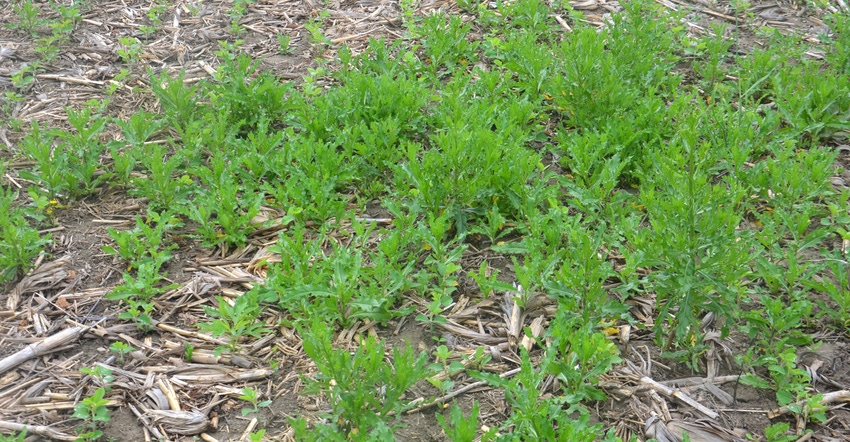
If you are prone to nightmares, perhaps Canada thistles jump out at you during the night from time to time. Any farmer who has battled them knows they can be a nightmare to control.
“This perennial can regrow from roots underground as well as from seed,” says Bill Johnson, Purdue University Extension weed control specialist. “The ability to regrow from roots makes Canada thistle a tough competitor. It’s difficult to wipe out with one application. You’re typically looking at multiple applications and likely at different times during the year.”
The secret is taking up the fight and committing to bringing Canada thistle under control, Johnson says. Often, thistles show up in patches in a field. Left unchecked, they can choke out the crop. If the crop survives, yield is often severely impacted.
Postemergence control options break down into treatments that are more likely to provide some control of the entire plant, including activity on roots, and treatments more geared toward burning back thistles and getting through the season.
If you opt for surviving the season, it’s important to plan how you will control patches going forward, Johnson says. Fall is a great time to work on thistle patches once thistles have some regrowth and are growing actively.
Corn options
If you’re hoping for whole-plant control in corn, glyphosate on glyphosate-resistant corn or Stinger-based herbicides in any type of corn are likely the best options, Johnson says. Apply Stinger when thistles are 4 inches tall or taller and before bud stage. Apply glyphosate in the bud stage. The earlier you can apply, the better the odds for season-long control. However, pay attention to crop growth stage restrictions for any herbicide used postemergence in corn.
Status should control aboveground growth of Canada thistle. In LibertyLink corn, glufosinate (Liberty) with atrazine should do the same thing.
If your goal is controlling or at least suppressing aboveground growth to prevent further spread, other herbicides with activity on Canada thistle include bromoxynil plus atrazine, dicamba plus atrazine, dicamba plus 2,4-D and combinations of nicosulfuron with dicamba.
Soybean options
Use of dicamba or 2,4-D plus glyphosate in soybeans with the appropriate herbicide-resistant traits is the most effective post treatment in beans, Johnson notes. Dicamba can only be applied if soybeans have the Xtend or XtendFlex trait. Only apply 2,4-D choline, the active ingredient in Enlist, on E3 Enlist soybeans. Glyphosate can be used with Xtend, XtendFlex and E3 Enlist soybeans.
Late post applications in the bud to flower stage provide best control of underground plant parts. However, to protect yield, spray when thistles are small and retreat regrowth.
Other options with activity on Canada thistle but that are typically less effective include fomesafen, Ultra Blazer or Cobra. You can also apply Pursuit, Classic, FirstRate and/or Synchrony XP, but results have been variable on Canada thistle.
About the Author(s)
You May Also Like




